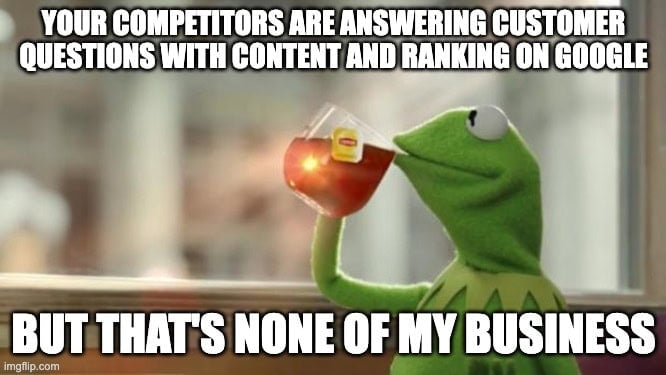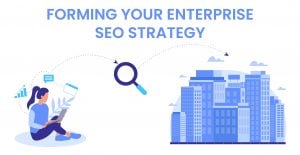Let’s get one thing straight: content marketing isn’t just throwing blog posts at the wall and hoping something sticks. It’s a sophisticated marketing strategy that requires knowing which type of content will resonate with your target audience and when to deploy it.
The digital landscape demands that your content marketing efforts work harder and smarter. According to the Content Marketing Institute’s 2024 research, 71% of B2B marketers say content marketing has become more critical to their organization in the last year.
That’s not a trend—that’s a mandate.
Whether you’re a seasoned marketer or just starting to build your content strategy, understanding the different types of content marketing available is crucial.
This guide breaks down 17 types of content for marketing that can help you attract, engage, and convert potential customers.
Written Content: The Foundation of Content Marketing
Blog Posts
Blog posts remain one of the top content marketing types for good reason. They’re versatile, SEO-friendly, and perfect for establishing your brand as a thought leader in your niche. According to HubSpot’s 2024 State of Marketing Report, businesses that publish blog content regularly generate 67% more leads than those that don’t.
The beauty of blog content lies in its flexibility. You can publish quick tips, long-form analyses, or industry commentary—whatever format serves your strategy best. The key is consistency and quality. One well-researched, in-depth blog post will outperform a dozen rushed pieces every time.
Pro Tip: Use your blog posts to target long-tail keywords that your competitors are ignoring. These lower-competition terms often convert better because they capture users with specific intent. Plus, they’re easier to rank for while you build domain authority.
Long-Form Content and In-Depth Guides
When you want to provide valuable information that genuinely educates your audience, long-form content is your best friend. An in-depth guide demonstrates expertise while addressing complex topics that shorter formats can’t handle. These comprehensive resources often become evergreen assets that continue to attract organic traffic years after you publish them.
Long-form blog posts (typically 2,000+ words) also tend to rank higher in search results. A 2024 study by Backlinko found that the average first-page Google result contains 1,447 words and that longer content generally achieves better ranking positions.
Case Studies
Nothing builds trust quite like proof. Case studies showcase real results from real clients, making them incredibly persuasive forms of content marketing. At BCC Interactive, we’ve seen firsthand how powerful this content marketing method can be—check out our case studies page to see how we’ve helped brands transform their digital presence.
Case studies work because they combine storytelling with data, appeal to both logic and emotion, and provide the social proof that potential customers want to see before making a decision.
Pro Tip: Structure your case studies using the Challenge-Solution-Results framework. Start with the client’s problem, detail your approach, and finish with quantifiable outcomes. Numbers matter—”increased traffic by 247%” is far more compelling than “significantly increased traffic.”
Ebooks
Ebooks serve as lead magnets, providing in-depth information while capturing contact details for your email list. This form of content typically offers more comprehensive coverage than a blog post but remains more accessible than a white paper. An ebook can establish your brand as an authority while nurturing prospects through your funnel.
The key to a successful ebook is ensuring it delivers genuine value—not just repurposed blog content slapped between a cover page and a CTA. In fact, 90% of buyers are willing to share their information in exchange for a well-crafted ebook or guide.
Checklists and Templates
Sometimes the most valuable content is also the simplest. Checklists and templates provide immediate, actionable value that your audience can implement right away. They’re shareable content that people actually want to save and revisit, creating multiple touchpoints with your brand.
Templates work particularly well for process-oriented industries. Whether it’s a content calendar template, an SEO checklist, or a project planning framework, these resources position your brand as helpful and practical rather than just promotional.
Visual Content: Show, Don't Just Tell
Infographics
Infographics transform complex data into visually appealing, digestible content. In our scroll-happy world, an eye-catching infographic can stop thumbs mid-swipe and deliver your message more effectively than paragraphs of text ever could. According to Venngage’s 2024 survey, content with relevant images gets 94% more views than content without images.
The best infographics strike a balance between being informative and visually engaging. They should simplify information, not complicate it with unnecessary design flourishes.
Pro Tip: Repurpose your infographics across multiple platforms. Post the full version on your blog for SEO benefits, share bite-sized sections on Instagram, and create a carousel version for LinkedIn. One infographic can become 10+ pieces of social media content.
Memes and GIFs
Yes, memes are a legitimate content marketing type—when used appropriately. They’re relatable, shareable, and can humanize your brand faster than almost any other format. However, there’s a fine line between being funny and trying too hard. If your meme requires a committee meeting to approve it, it probably won’t land.
GIFs work similarly, adding personality and emotion to your social media content without requiring video production resources. Just make sure they align with your brand voice and don’t distract from your core message.

Charts and Data Visualizations
When you’ve got original research or compelling statistics to share, presenting them in a chart or data visualization makes the information more memorable and shareable. This type of content is particularly valuable for building brand authority and earning backlinks, both of which are crucial for SEO.
Video Marketing: The Engagement Powerhouse
Video content continues to dominate engagement metrics across platforms. Wyzowl’s 2024 State of Video Marketing Report reveals that 91% of businesses use video as a marketing tool, and 90% of marketers say video gives them a good ROI.
Publishing videos doesn’t require a Hollywood budget anymore. Authentic, helpful content often outperforms highly produced pieces. Whether you’re creating product demonstrations, behind-the-scenes glimpses, or educational content, video format allows you to build an audience through personality and expertise.
The key is choosing the right platform for your video content. YouTube for long-form tutorials, Instagram for quick tips, TikTok for trending topics—each channel serves different purposes in your content strategy.
Pro Tip: Always add captions to your videos. According to Verizon Media research, 69% of consumers watch videos with the sound off in public places, and 25% watch with the sound off in private places. Captions make your content accessible and ensure your message gets across regardless of viewing conditions.
Audio Content: Podcasts and Beyond
Podcasts
Podcasts have evolved from a niche medium to one of the most influential types of content marketing. According to Edison Research’s 2024 Infinite Dial study, 42% of Americans aged 12+ have listened to a podcast in the last month, representing approximately 135 million people.
Starting a podcast lets you build a dedicated audience, establish thought leadership, and create content people can consume on their commutes or during workouts. The intimate nature of audio content creates a stronger connection with your audience than other formats do.

Interactive Content: Engagement on Steroids
Webinars and Online Seminars
Webinars combine education with lead generation, making them one of the most effective content marketing types for B2B brands. They let you engage directly with your audience, answer questions in real time, and position your team as experts. Plus, you can repurpose webinars into multiple other content formats afterward—talk about efficiency.
ON24 2025 Webinar Benchmarks Report found that the average webinar attendee spends 51 minutes engaged, demonstrating the format’s ability to hold attention in a distracted world.
Pro Tip: Record every webinar and turn it into at least five additional content pieces: a blog post summarizing key points, short social media video clips, a podcast episode, an infographic of main takeaways, and email content for your nurture sequence.
Online Courses
If you want to build an audience while establishing deep expertise, online courses represent a powerful content marketing method. They require more upfront investment than other types of content, but they create lasting value. Courses can serve as both lead generation tools and revenue streams, depending on your strategy.
The key is to ensure your course provides practical, actionable knowledge that participants can apply immediately. Theory is great, but transformation is what people want to learn and are willing to pay for.
User-Generated Content: Let Your Customers Do the Talking
User-generated content (UGC) might be the most underutilized type of content marketing out there. According to Stackla’s 2024 Consumer Content Report, consumers find UGC 9.8 times more impactful than influencer content when making purchasing decisions.
Encouraging customers to create social media content, share testimonials, or submit reviews doesn’t just provide you with marketing assets—it also builds community and authenticity around your brand. Plus, it’s cost-effective and tends to have higher engagement rates than branded content.
Email Marketing: The OG Digital Channel
Don’t let shiny new platforms distract you from email’s consistent performance. Email remains one of the highest-ROI channels in content marketing. Litmus’s 2024 State of Email Report shows that email marketing generates an average return of $36 for every $1 spent.
The key is providing value, not just promotions. Mix educational content, curated resources, and exclusive insights with your offers. Segment your audience and personalize your messaging. Email marketing works when you treat subscribers like valued community members, not just entries in a database.
Pro Tip: Segment your email list by engagement level and content preferences. Send your most active subscribers your best content first—they’re more likely to engage, which improves your sender reputation and increases deliverability for your entire list.
Influencer Collaborations: Borrowed Authority
Influencer marketing has matured beyond sending free products to anyone with 10K followers. Strategic influencer partnerships can help you reach new audiences, build credibility in your niche, and create authentic content that resonates. The key is finding influencers whose audience truly aligns with your brand and whose values match yours.
According to Influencer Marketing Hub’s 2024 Benchmark Report, businesses are making $5.78 for every $1 spent on influencer marketing, with the top 13% making $20 or more.
Social Media Content: Platform-Specific Strategy
Content for social media isn’t one-size-fits-all. What works on LinkedIn won’t necessarily gain traction on Instagram, and TikTok requires a completely different approach than either. Successful marketers understand that using different types of content across platforms is essential.
Instagram favors visually appealing content and behind-the-scenes glimpses. LinkedIn rewards thought leadership and professional insights. Twitter (sorry, X) thrives on timely commentary and conversation. Your content marketing strategy should account for these platform-specific nuances rather than cross-posting identical content everywhere.

Testimonials and Reviews: Social Proof That Converts
Testimonials serve as powerful trust signals that can make or break conversion rates. BrightLocal’s 2024 Consumer Review Survey found that 98% of consumers read online reviews for local businesses, with 87% reading reviews for businesses in general.
The most effective testimonial incorporates specific results, authentic language, and ideally, a photo or video of the customer. Generic “Great service!” reviews don’t move the needle. Stories of transformation and specific outcomes do.
Original Research: Creating Linkable Assets
Publishing original research positions your brand as an authority while creating highly linkable content that can dramatically improve your SEO. Original content based on proprietary data attracts backlinks naturally because other publishers need to cite your research when referencing the statistics.
This type of content marketing requires investment in data collection, analysis, and presentation, but the payoff in terms of brand awareness and organic traffic can be substantial. It’s one of the few content types that consistently earns high-quality backlinks at scale.
Matching Content Types to Your Marketing Goals
Not all content marketing types serve the same purpose. Here’s how different formats align with specific business objectives:
| Marketing Goal | Best Content Types | Why It Works |
|---|---|---|
| Brand Awareness | Blog posts, infographics, video marketing, podcasts | Wide reach, highly shareable, optimized for discovery |
| Lead Generation | Ebooks, webinars, templates, checklists, courses | Provides value worth exchanging contact information for |
| Sales Enablement | Case studies, testimonials, product videos, comparison guides | Addresses objections and demonstrates proven results |
| Customer Retention | Email newsletters, exclusive content, user community content | Builds ongoing relationships and keeps brand top-of-mind |
| Thought Leadership | Original research, long-form guides, podcast interviews | Establishes expertise and authority in your niche |
| SEO & Organic Traffic | Blog posts, in-depth guides, infographics, video content | Optimized for search engines and link building |
| Social Engagement | Memes, GIFs, user-generated content, short videos | Highly shareable and conversation-starting |
Content Production Timeline: What to Expect
Understanding the time investment required for different content marketing types helps you plan resources effectively:
| Content Type | Average Production Time | Shelf Life | ROI Timeline |
|---|---|---|---|
| Blog Post (800-1,200 words) | 3-6 hours | 6-12 months | 1-3 months |
| Long-Form Guide (2,500+ words) | 12-20 hours | 12-24+ months | 3-6 months |
| Infographic | 8-15 hours | 12-18 months | 2-4 months |
| Video (3-5 minutes) | 15-30 hours | 6-18 months | 1-3 months |
| Podcast Episode | 6-12 hours | 12-24+ months | 3-6 months |
| Webinar | 20-40 hours | 12-18 months | 1-2 months |
| Ebook | 40-80 hours | 18-24+ months | 2-4 months |
| Case Study | 10-20 hours | 12-24 months | 1-3 months |
| Email Campaign | 2-5 hours | 1-3 months | Immediate |
| Social Media Post | 30 minutes - 2 hours | 1-7 days | Immediate |
Pro Tip: Focus on content types with longer shelf lives when you’re building your content library. A well-optimized long-form guide can drive traffic for years, while social media posts have value measured in days. Balance your strategy between evergreen and timely content.
The BCC Interactive Approach: Strategy Over Spray-and-Pray
Here’s the truth most agencies won’t tell you: you don’t need to execute all 17 types of content marketing. You need the right mix for your specific goals, audience, and resources. That’s where strategy separates the signal from the noise.
At BCC Interactive, we’ve spent years helping brands cut through the content clutter by developing data-driven strategies that focus on quality over quantity. We don’t believe in creating content for the sake of creating content. Every piece should serve a purpose, support your business goals, and provide genuine value to your audience.
Different types of content marketing serve different stages of the buyer’s journey. Blog posts might attract initial awareness, while case studies help close deals. Video marketing can engage mid-funnel prospects, while email nurtures relationships over time. The key is orchestrating these various content marketing types into a cohesive strategy that guides prospects from discovery to conversion.
Our case studies demonstrate how this approach works in practice—from e-commerce brands scaling through optimized content strategy to B2B companies transforming their lead generation through targeted content marketing methods.
Time to Level Up Your Content Marketing
Understanding these different content marketing types is just the beginning. The real challenge is determining which forms of content will resonate with your audience, how to produce them consistently, and how to measure their impact on your business goals.
The most successful content marketing isn’t about following trends or checking boxes. It’s about deeply understanding your audience, delivering value at every touchpoint, and continuously optimizing based on data and results.
Ready to build a content marketing strategy that actually drives results? At BCC Interactive, we specialize in cutting through the noise and creating high-quality content that attracts, engages, and converts. Whether you need help developing a comprehensive content strategy, executing specific content marketing types, or optimizing your existing efforts, our team has the expertise to help you achieve your goals.
Don’t let your competition dominate the conversation in your niche. Let’s talk about how strategic content marketing can transform your business. Because in 2025, the question isn’t whether you need content marketing—it’s whether you’re doing it effectively enough to stand out.
Frequently Asked Questions About Content Marketing ROI
There’s no single “most effective” type of content marketing—it depends entirely on your goals, audience, and resources. Blog posts and video content consistently deliver strong ROI across industries, but B2B companies often see better results from webinars and case studies. At the same time, B2C brands may find more success with user-generated content and social media. The most effective approach combines multiple content types that work together throughout the customer journey.
Start with 3-5 content types that align with your primary goals and expand from there. Trying to execute all 17 types of content marketing simultaneously will spread your resources too thin and compromise quality. Master a few formats first, then add new content marketing types as your team and budget grow. Focus on consistency over variety—publishing quality blog posts weekly beats publishing one blog post, one video, one podcast, and one ebook sporadically.
Traditional marketing interrupts your audience with promotional messages (think TV commercials or banner ads), while content marketing attracts your audience by providing valuable information they’re actively seeking. Content marketing builds trust and authority over time rather than demanding immediate action. It’s the difference between shouting “Buy our product!” and demonstrating expertise that makes people want to work with you.
Most businesses see initial traction within 3-6 months, with substantial results appearing after 9-12 months of consistent effort. Content marketing is a long-term strategy—you’re building organic visibility and brand authority, not running a quick promotion. However, some content types like email marketing and paid promotion of content can generate immediate results, while SEO-focused written content typically takes longer to gain ranking and traffic.
Absolutely not. It’s better to excel on 2-3 platforms where your target audience actually spends time than to maintain a mediocre presence everywhere. B2B companies often prioritize LinkedIn and YouTube, while B2C brands might focus on Instagram and TikTok. Research where your audience is most active and concentrate your efforts there. You can always expand to additional platforms once you’ve mastered your core channels.
Yes—content marketing is one of the few channels where smaller brands can outperform larger competitors. Big companies often struggle with slow approval processes and corporate messaging that feels impersonal. Small businesses can move faster, get more personal, and target niche topics that larger companies ignore. Focus on specific long-tail keywords, create authentic content that reflects your brand personality, and engage directly with your audience. Quality and consistency beat budget size.
Consistency matters more than frequency. Publishing one high-quality blog post weekly is more effective than three mediocre posts. That said, most successful content marketing strategies include multiple content types on different schedules: 1-2 blog posts per week, 3-5 social media posts per day, 1-2 email newsletters per week, and longer-form content like ebooks or webinars monthly or quarterly. Adjust based on your resources and audience engagement.
Most successful brands use a hybrid approach. Keep brand-critical content like thought leadership pieces and strategic messaging in-house while outsourcing technical writing, design work, or volume content production. Your team knows your brand voice and strategy best, but specialized freelancers or agencies can bring expertise in specific content types. At BCC Interactive, we partner with clients to extend their team’s capabilities while maintaining their brand authenticity.
Track metrics aligned with your goals. For brand awareness, monitor traffic, impressions, and reach. For lead generation, measure form submissions, email signups, and conversion rates. For sales, track influenced revenue and attribution. Don’t get distracted by vanity metrics like social media followers—focus on engagement rates, time on page, and actions that indicate genuine interest. Set up proper tracking through Google Analytics, your CRM, and marketing automation platform before you start creating content. Check out our article to learn more on How to Measure Content Marketing ROI.


